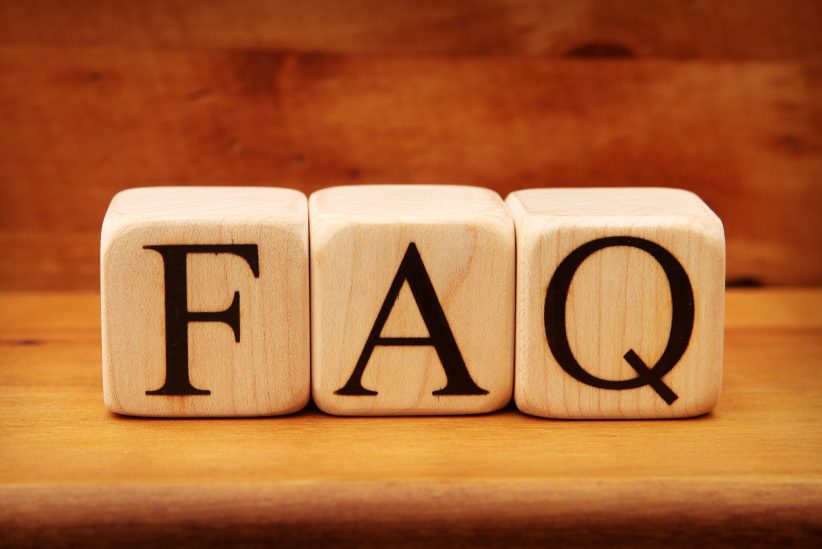OU Kosher presents frequently asked questions to-date on the OU Kosher Hotline (212-613-8241) by consumers in preparation for Sukkot. Questions may also be submitted to kosherq@ou.org.
The questions below were answered by Rabbi Eli Gersten, rabbinic coordinator and halachic recorder. The responses were reviewed by Rabbi Yaakov Luban, OU Kosher executive rabbinic coordinator. Rabbi Moshe Zywica, OU Kosher executive rabbinic coordinator, supervises the OU Consumer Relations Department.
- Are there any rules as to where a sukkah may or may not be located?
The sukkah should not be located in an area that has a bad smell.1 It cannot be placed under a tree or awning. It should preferably be built on a patio, deck or driveway and not on the grass.2
- What are the minimum dimensions for a sukkah?
A kosher sukkah must have at least 3 walls, and each wall must have a minimum length of 28 inches (7 tefachim x 7 tefachim).3 The walls of the sukkah must extend at least 40 inches high,4 and the walls may not be suspended more than 9 inches above the ground 5 (this is a common problem with fabric sukkahs).
- Is it a problem if my sukkah walls blow with the wind?
The walls of a sukkah should be tied tight so they do not move with the wind.6 If this cannot be done, then one should install a series of tight belts or ropes that will not blow in the wind that wrap around the sukkah. The first belt is placed within 9 inches of the floor and the next within 9 inches of the first, and so on, until this series of belts reaches above 40 inches. Thus, with four or five parallel belts, one can create a halachic wall that does not blow with the wind.
- What is the story with schach mats?
Years ago, “putting up schach” referred to the tedious process of placing hundreds of single stalks of bamboo or lath across the top of one’s sukkah. Today, this task has been greatly simplified due to the proliferation of schach mats. However, mats that are made for sitting are not kosher for schach.8 Because these mats are made in a part of the world where it is common to make mats for sitting, it is imperative that one’s schach mat comes with a reliable hashgacha.
- Who can place the mats on top of the sukkah?
The mats should be placed on the sukkah by a Jew l’sheim mitzvah (for the purpose of the mitzvah). If it is necessary to have a non-Jew assist with the laying of the mats, a Yisroel should raise the mats slightly and lay them back down.9 This may be done with a pole.
- How should the schach be supported?
One should not rest schach directly on metal or plastic, but rather on wooden beams placed on top of the metal poles.10 If one’s mats are woven with plastic wire, they must make sure that the schach is placed perpendicular to the wooden beams; otherwise the stalks are being supported exclusively by the plastic wire.
- Can one tie their schach mats to the sukkah with string?
Schach mats are notorious for blowing off of the sukkah. Therefore, the mats should be tied down. However, one should not tie the schach with wire or synthetic strings, but rather they should use cotton or hemp string or place heavy 2x4s on top of the schach to weigh it down.
- What must be eaten in the sukkah?
All meals that involve bread or mezonos must be eaten in the sukkah. However, if one is only eating fruits and vegetables, or less than a k’beitza (volume of an egg) of mezonos then a sukkah is not required.11 It is meritorious to eat and drink exclusively in the sukkah12. One only recites the blessing “leisheiv ba’sukkah” if there is an obligation (i.e. a meal of bread or mezonos). During a meal, one may not eat anything outside of the sukkah, even fruits and vegetables.13
- Who is obligated to eat in the sukkah?
Men are obligated to eat in the sukkah. Boys from the age when they can eat independent of their mothers (approximately 5-6 yrs old) are obligated to eat in the sukkah.14Foods that require a sukkah, may not be given to a child to eat out of the sukkah.15 Women are not obligated to eat in a sukkah, but if they do so, they fulfill a mitzvah, and according to Ashkenazic tradition they may recite the blessing.16
Remember to make an eruv tavshilin when the second day of a holiday falls on the Sabbath or when the Sabbath falls immediately after a holiday. For more information see An Eruv Tavshilin Primer.
_____________________________________________________________
Sources
-
Mishna Berurah 630:4 ↩
-
Shulchan Aruch (O.C. 336:3) ↩
-
Shulchan Aruch (O.C. 634:1) ↩
-
Shulchan Aruch (O.C. 633:8) ↩
-
Shulchan Aruch (O.C. 630:9) ↩
-
See Yechaveh Daas 3:46 for sources that any amount of movement will pasul ↩
-
Beis Yosef O.C. 630 based on Mishna in Eruvin 15b ↩
-
Shulchan Aruch (O.C. 629:6) ↩
-
See Mishna Berurah 636:8 ↩
-
Shulchan Aruch (O.C. 629:7) ↩
-
Shulchan Aruch (O.C. 639:2) ↩
-
Shulchan Aruch (O.C. 639:2) ↩
-
See Mishna Berurah in Sha’ar Ha’tziyun 639:29 ↩
-
Shulchan Aruch (O.C. 640:2) ↩
-
Mishna Berurah 640:5 ↩
-
Shulchan Aruch (O.C. 589:6) ↩

